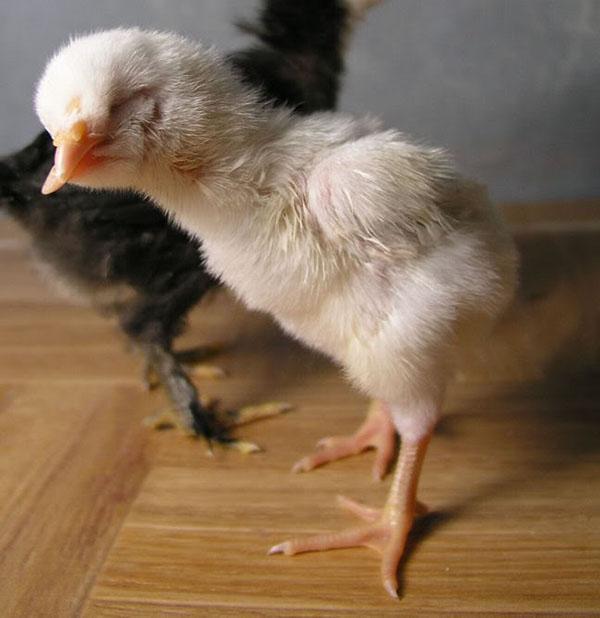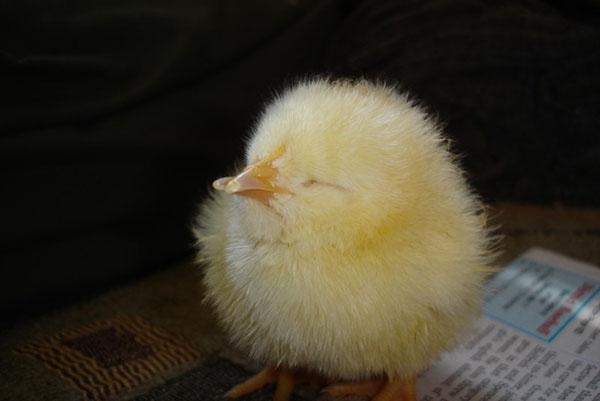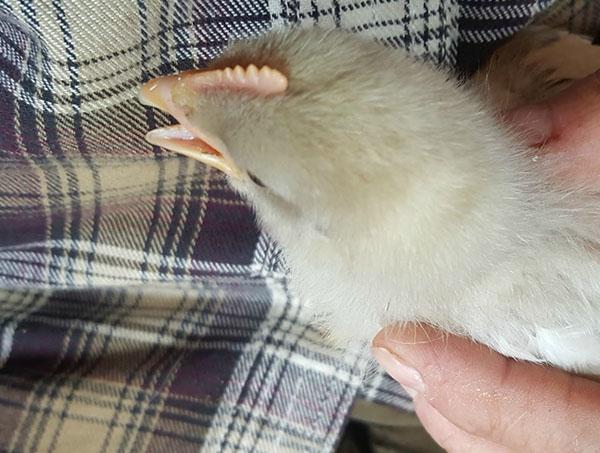Beak curvature in chickens - causes and treatment methods
 A crossed or scissor beak is a type of deformity that sometimes occurs in chickens. Instead of normal development, the upper and lower parts of the beak begin to grow in opposite directions, which makes it difficult for the bird to eat. The chicken does not have to be sentenced to death. There are several ways to try to give your bird a chance to survive and grow.
A crossed or scissor beak is a type of deformity that sometimes occurs in chickens. Instead of normal development, the upper and lower parts of the beak begin to grow in opposite directions, which makes it difficult for the bird to eat. The chicken does not have to be sentenced to death. There are several ways to try to give your bird a chance to survive and grow.
What is a scissor beak?

Causes and symptoms of the disease
The causes of beak deformation can be:
- heredity, skull injuries, due to which the upper and lower parts of the beak begin to grow at different rates;
- wrong incubation temperature.
 Beak curvature can be caused by incorrect positioning of the chick during the incubation period - a posture is considered normal when its head is under one of the wings. In rare cases, liver disease can also cause deformities in the beak and claws. Interestingly, chicks incubated by a brood hen are much less likely to be born with a curved beak.
Beak curvature can be caused by incorrect positioning of the chick during the incubation period - a posture is considered normal when its head is under one of the wings. In rare cases, liver disease can also cause deformities in the beak and claws. Interestingly, chicks incubated by a brood hen are much less likely to be born with a curved beak.
You will not be able to detect a deformity of the beak during the incubation period, but at the age of 1–2 weeks, this defect becomes clearly visible. Another symptom is stunting. If a chick has a scissor beak after a few (more than one or two) weeks of its life, the reason may be a deficiency of essential nutrients.
Lack of calcium, folic acid and vitamin D will lead to poor chick development.
However, if only one chick has a deformed beak, then most likely this is due to problems in the incubation period.
In most cases, chickens with misshapen beaks eat and drink less. It takes them much longer to eat and drink. For this reason, they tend to grow more slowly and do not make good hens.
Treatment methods
 Unfortunately, there are no traditional methods of treating beak deformities in chickens. In severe cases, the curvature progresses rapidly over time, however, with minor deformations, birds can live a normal long life. If you have a chick with a crossed beak, compare its weight with other chicks as often as possible. If you suspect that it is not getting enough food, try feeding it separately from other birds.
Unfortunately, there are no traditional methods of treating beak deformities in chickens. In severe cases, the curvature progresses rapidly over time, however, with minor deformations, birds can live a normal long life. If you have a chick with a crossed beak, compare its weight with other chicks as often as possible. If you suspect that it is not getting enough food, try feeding it separately from other birds.
What can help:
- Grinding the ends of the beak with sandpaper or a nail file will help it close better.
- Some people advise using a Dremel sander to grind the beak, but the fact is that this procedure is very scary for chickens. The best option is the nail clippers used by dog owners.
- Regardless of which method of chick or chicken beak treatment you use, be sure to keep cornstarch handy - it will help to quickly stop bleeding if you accidentally hit a blood vessel.
- Before feeding, crush the food and dilute it with warm water or a little yogurt so that the chick can scoop up the food with its beak instead of pecking at it.
- Give sick chicks a sufficient amount of high protein feed - crumbled eggs, mealworms, seeds, etc. This will help the birds develop their beaks.
- Raise the pan to a level where it will be comfortable for sick chicks to take feed - the distance between the beak and food should be minimal.
- The beaks of chickens are constantly growing, so from time to time they grind them down - they carry them from side to side along the ground. Chickens with scissor beaks will find it difficult to do this, but laying out some of the paths with paving stones or stones can greatly facilitate the grinding procedure for them.

Prevention
To prevent the appearance of sick chicks in the future, do not hatch eggs from chickens with deformed beaks, as well as from those from whose eggs sick chicks hatch. Use only high quality incubator and carefully monitor the temperature in it. Feed your chickens a balanced diet and limit the amount of treats if you plan to use their eggs for hatchery.
As long as chickens with misshapen beaks get enough food and liquid, they can live fairly normal lives. Remember that these birds are unable to feed and preen as well as healthy birds. chickensso just ignore the differences in their existence, including slow weight gain and untidiness. You should also take into account that healthy birds can often attack chickens with curved beaks, so be careful and stop any manifestations of aggression.